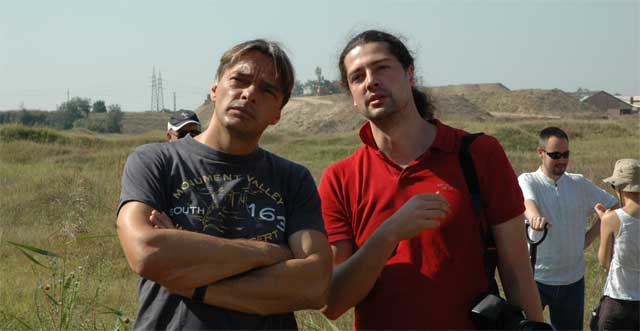LOESSFEST'09 | Aug. 31st – Sept. 3rd, 2009 |Novi Sad-Serbia
Characteristics of the Grain-Size Distribution of the Loess-Palaeosol Sequence at Ruma, Serbia
Jeff Vandenberghe1
1Vrije Universiteit, De Boelelaan 1085-1087, 1081 HV Amsterdam, The Netherlands
In general the loess layers at Ruma are fine-grained, certainly when compared with sites like Titel and Mosorin. The reason is rather obvious: Titel and Mosorin are situated near to the Danube and Tisza floodplains receiving much of the loess from that area (Bokhorst et al., 2009), while Ruma is situated in a plateau position and shows a more regional signature (Markovic et al., 2006). But the most striking granulometric property is the rather uniform character of all deposits. The clay content varies from 20% in the loess layers to 30% in the soils, but modal grain-size and U-ratio show only small variations. Lateral variability is very prominent, especially visible in colour and thickness of the soils, but also in their clay content, other parameters remaining almost identically.

Due to the low temporal resolution of this section, the imminent possibility of hiatuses and the lack of precise dating a relation between grain-size distribution and climatic conditions is difficult to prove. Instead, it will be derived from the grain-size distributions that no loess has been deposited during interglacial periods and that grain-size variations, if any, are largely due to in-situ weathering and local conditions of deposition.



